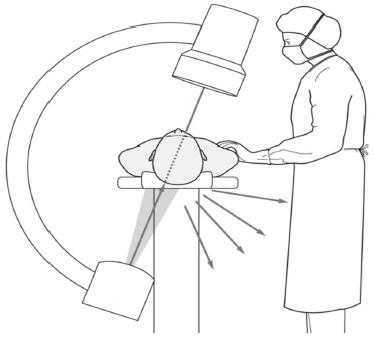OBJECTIVE:
the aim of this study was to assess the degree of exposure of the orthopedic surgical team to fluoroscopic ionizing radiation.
METHODS:
the ionizing radiation to which the orthopedic surgical team (R1, R2 and R3) was exposed was assayed using thermoluminescent dosimeters that were distributed in target anatomical regions (regions with and without protection using a lead apron). This was done during 45 hip osteosynthesis procedures to treat transtrochanteric fractures that were classified as 31-A2.1 (AO).
RESULTS:
the radioactive dose received by R3 was 6.33 mSv, R2 4.51 mSv and R3 1.99 mSv (p = 0.33). The thyroid region received 0.86 mSv of radiation, the thoracic region 1.24 mSv and the gonadal region 2.15 mSv (p = 0.25). There was no record of radiation at the dosimeters located below the biosafety protectors or on the team members' backs.
CONCLUSIONS:
the members of the surgical team who were located closest to the fluoroscope received greater radiation doses than those located further away. The anatomical regions located below the waistline were the ones that received most ionizing radiation. These results emphasize the importance of using biosafety devices, since these are effective in preventing radiation from reaching the vital organs of the medical team.
Ionizing radiation; Fluoroscopy; Orthopedic surgery








